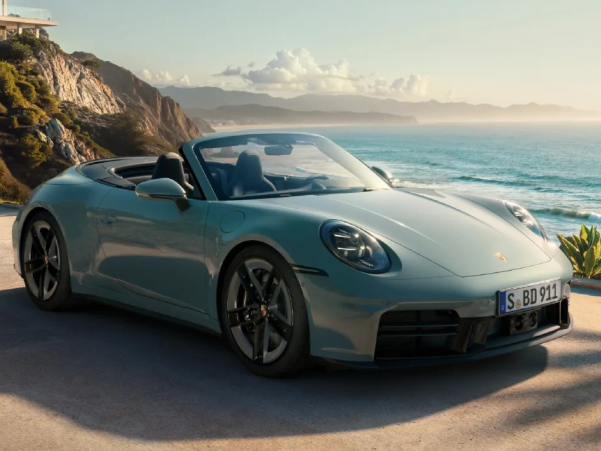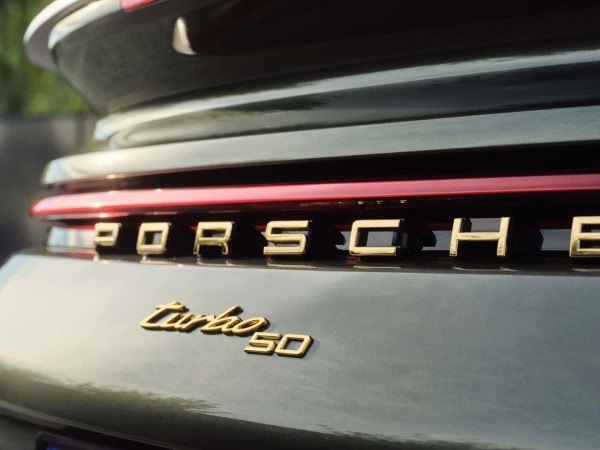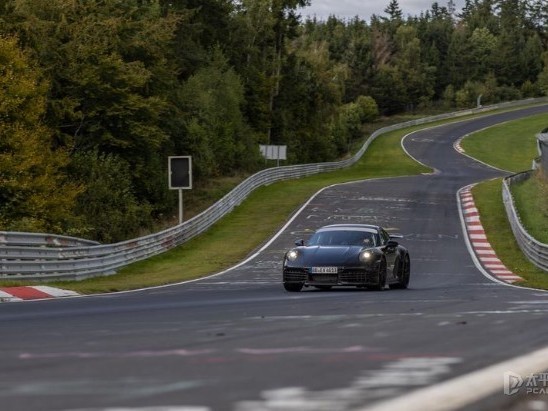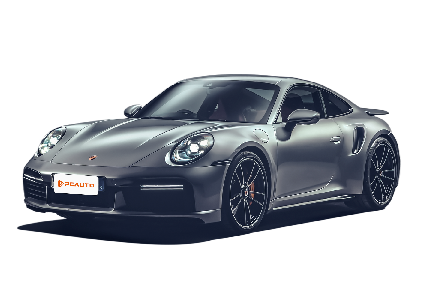Q
how much is a porsche 911
In Malaysia, Porsche 911 pricing varies pretty widely depending on the model, specs, and optional extras you go for. Brand-new, you're looking at a starting price of around 900,000 to 1.2 million ringgit. For the high-performance beasts like the 911 Turbo S, though, that figure can easily blow past the 1.5 million ringgit mark. Your best bet for the latest and most accurate numbers? Hit up your local authorized Porsche dealer—they’ll sort you out.
The Porsche 911 is legendary for its classic rear-engine setup and that unbeatable driving thrill, making it a top pick for folks who crave both high performance and luxury. Over in Malaysia, you’ll commonly see models like the Carrera range, the Targa, and the Turbo variants. Power-wise, things start at a solid 385 horsepower for the base models and climb all the way up to a whopping 650 horses in the Turbo S. And across the board, you’re getting that slick PDK dual-clutch gearbox and a capable all-wheel-drive system—tech that just works.
Another plus? The 911 holds its value really well in Malaysia. Plus, Porsche Centers here offer top-notch after-sales service, including regular maintenance programs and factory warranty coverage, so you can drive with peace of mind knowing your investment is looked after. If a brand-new 911 stretches the budget, don’t sleep on low-mileage used models. They typically come in 30-50% cheaper than new, but just make sure you check the condition and service history thoroughly before taking the plunge.
Special Disclaimer: This content is published by users and does not represent the views or position of PCauto.
Related Q&A
Q
what type of car is porsche 911
The Porsche 911 is a legendary high-performance sports car from German automaker Porsche. It's that iconic rear-engined, rear-wheel or all-wheel drive luxury sportster that's been turning heads and setting standards since 1963. Here in Malaysia, the 911 has a massive following, and it's easy to see why. Drivers love its razor-sharp handling, the punch from its flat-six turbocharged engine, and that timeless design that blends classic cues with modern flair – it's absolutely perfect for cruising those coastal roads in Penang or Johor.
Porsche offers the 911 in a bunch of flavors to suit different tastes. There's the Carrera, which is the solid base model, then the Turbo for those who crave serious speed, and the track-focused GT3 for the ultimate driving purists. What really stands out about the 911, though, is how it manages to keep that classic rear-engine layout while still being totally usable every day – thanks to smart tech like the PDK dual-clutch gearbox and adaptive suspension. That balance is why it's such a big deal in Malaysia's premium sports car scene. And if you do take the plunge, Porsche's got your back with official service centers in cities like Kuala Lumpur, so you know you're covered.
Q
how many cylinders in a porsche 911
The Porsche 911, that iconic sports car staple, has seen its engine setups evolve across generations and models, but let's be real—most of 'em rock that flat-six (H6) heart. It's like the 911's DNA, right? Take the current 992 series: the Carrera and Turbo models? They're packing 3.0L and 3.7L twin-turbo flat-sixes, respectively. This layout isn't just for show; it drops the center of gravity big time, making the car stick to the tarmac like glue and handle like a dream. And man, flat-sixes are loved for how smooth they are and how they deliver that power efficiently—total game-changer when you're carving up Malaysia's twisty hill roads or putting the hammer down on the highway.
Now, if you're all about that raw, unfiltered experience, the GT3 lineup is where it's at. Those bad boys stick with naturally aspirated engines, still six cylinders, of course. The result? Power that builds nice and linear, and hitting those high revs? Pure thrills. For Malaysian enthusiasts, picking a 911 boils down to what you crave. Daily driver? Track toy? Whatever it is, there's a six-cylinder 911 out there ready to tackle it all.
Q
how fast is the porsche 911 gt3 rs
The Porsche 911 GT3 RS is a high-performance sports car built specifically for the track. It tops out at around 296 km/h and sprints from 0 to 100 km/h in just 3.2 seconds. That kind of pace comes courtesy of its 4.0-liter naturally aspirated flat-six engine, which cranks out 525 horsepower. Pair that with lightweight construction and an advanced aerodynamics package, and you’ve got a car that generates serious downforce and stability at high speeds.
For Malaysian petrolheads, this thing really shines on the circuit – it can even push its limits on challenging tracks like Sepang International Circuit. One thing to note though: while that naturally aspirated engine goes absolutely berserk in the upper rev range, it demands some tender loving care. Especially in Malaysia’s hot and humid climate, keeping a close eye on oil levels and the cooling system with regular checks is a must.
Also, the GT3 RS features a firm suspension setup, which is perfect for carving up track days but might feel a bit jittery on everyday roads. But hey, that’s all part of the package when you’re chasing ultimate handling. If this kind of high-performance machine floats your boat, keep an eye on rivals like the Lamborghini Huracán STO or Ferrari 488 Pista. They’re all track-focused beasts too, each with their own unique driving personalities and engineering philosophies.
Q
why is porsche 911 so expensive
The Porsche 911 commands such a premium price tag primarily because it's a masterful blend of the brand's rich heritage, exceptional engineering, and that one-of-a-kind driving feel we all crave. As Porsche's flagship, the 911 is built to incredibly high standards – think that rear-mounted flat-six engine and a chassis tuned to absolute precision. These aren't just tech specs; they're what make the 911 tick, but they also drive up the production costs. Then there's the extensive use of lightweight materials in the body, stuff like aluminum and carbon fiber, which further bumps up the price. Over in Malaysia, let's not forget the import duties and consumption taxes that can really inflate the final sticker price.
But here's the thing – the 911 also holds its value like a champ, thanks to its timeless design and consistently strong market demand. For Malaysian enthusiasts, it's more than just a sports car; it's a status symbol. That brand cachet and relative exclusivity play their part in keeping those prices up too. If you're into high-performance machines, the 911's unique allure is definitely worth a serious look. But hey, it doesn't hurt to shop around either. The Nissan GT-R or Mercedes-AMG GT, for example, offer similar thrills at different points in the price spectrum.
Q
how much is a pink porsche 911
In Malaysia, the exact price tag of a pink Porsche 911 hinges on the model year, specs, optional extras, and market demand. A brand-new base model typically starts between RM1 million to RM1.5 million. But if you're eyeing that custom pink paint job—think "Pink Pig" livery or special hues like Rubystar Neo—be prepared to shell out an extra RM50k to RM150k for the paint option.
For used cars, a 3- to 5-year-old pink 911 will likely set you back around RM700k to RM1 million. However, rare colorways or limited editions can command a 20%+ premium. It’s worth noting Porsche’s Exclusive Manufaktur program lets owners personalize exterior colors and interiors—these highly customized rides often hold more value and have stronger collector appeal.
Malaysian buyers should also factor in import duties (roughly 105%-200% based on engine displacement), GST, and AP permit costs—these can easily double the final on-road price. If you’re planning to hold onto it long-term, buying through official Porsche Malaysia channels is recommended to secure full warranty coverage. While special-colored cars might take longer to sell when you decide to part ways, their unique shades often translate to better retained value among specific buyer circles.
Q
how much is the porsche 911 turbo s
In Malaysia, the price of a Porsche 911 Turbo S can vary depending on the configuration, optional extras, and exchange rate fluctuations. Right now, the base price is roughly between 1.2 million and 1.5 million Ringgit, but for the most up-to-date quote, you'll need to check with your local authorized dealer. As the high-performance flagship of the 911 lineup, the Turbo S packs a 3.8-liter flat-six twin-turbo engine, cranking out 650 horsepower and 800 Nm of torque. Mated to an 8-speed PDK gearbox and Porsche's renowned all-wheel-drive system, it rockets from 0-100km/h in a blistering 2.7 seconds and tops out at 330km/h, showcasing Porsche's absolute mastery of power and handling. Malaysian enthusiasts should keep in mind that imported luxury cars come with additional costs like duties, insurance, and registration fees. On top of that, Porsche Centres often offer extensive personalization options – think lightweight packages or premium interior upgrades – which will all affect the final sticker price. If you're craving even more performance, look into track-focused tech like the Track Precision app to further refine your driving experience. Before taking the plunge, we highly recommend booking a test drive to really feel that pinpoint steering and the dynamic behavior of the active suspension system for yourself.
Q
which porsche 911 is the most comfortable
In Malaysia, if comfort is your top priority, the standout choices in the Porsche 911 lineup are the 911 Carrera 4S and Turbo S models – especially those kitted out with Porsche Active Suspension Management (PASM) and the 18-way electrically adjustable comfort seats. These two beauties manage to keep that iconic 911 driving thrill alive while seriously upping the long-haul comfort game. Thanks to softer suspension tuning, better sound insulation, and more generously proportioned seats, they’re particularly well-suited to Malaysia’s notoriously variable road conditions. The Carrera 4S’s suspension does a great job of ironing out bumps, while the Turbo S takes things up a notch with its more potent powerplant and plusher interior materials, elevating the overall driving and riding experience even further. Additionally, the 911 Targa strikes a nice balance between comfort and style, thanks to its unique open-top design and reinforced body rigidity. For Malaysian buyers, climate is another important factor to consider. It’s advisable to prioritize models equipped with ventilated seats and a premium air conditioning system to ensure comfort during the hot weather. The entire Porsche 911 range also offers a wealth of personalization options, allowing owners to further enhance comfort according to their needs – for example, upgrading to acoustic glass or selecting a softer suspension setting.
Q
how much is a porsche 911 gt3 rs
In Malaysia, the price of a Porsche 911 GT3 RS can vary depending on specifications, exchange rates, and import duties. Right now, you're looking at roughly 2 million to 2.5 million Ringgit for a brand-new one. For the most up-to-date figures, though, you’ll need to hit up your local authorized dealer.
This thing is the pinnacle of Porsche’s track-focused engineering. Under the hood is a 4.0-liter naturally aspirated flat-six engine cranking out 525 horsepower, mated to a 7-speed PDK dual-clutch gearbox. It’s built for the die-hard enthusiasts chasing that ultimate driving rush.
Malaysia’s high-performance car market has a steady appetite for machines like this, but let’s be real—stiff import taxes mean they’re pricier here than back in Europe. If you’re considering a used model, prices will swing based on condition, mileage, and year. My advice? Stick to reputable channels and make sure you check the full service history before signing on the dotted line.
For folks who live for track days, the GT3 RS’s lightweight build and aerodynamic package deliver seriously next-level handling. And to sweeten the deal, Porsche Malaysia hooks owners up with exclusive after-sales service and owner events, making the whole ownership experience even better.
Q
why is porsche 911 called 911
The reason the Porsche 911 is called the 911 goes back to its original internal project number, "901". When it was set to launch in 1964, Peugeot had already registered all three-digit model names with a "0" in the middle, forcing a change. So, it became the "911" – and the rest, as they say, is history. Initially badged as the Porsche 901, things changed after its debut at the Paris Motor Show. Peugeot stepped in, pointing out they'd patented the X0X naming format way back in the 1920s. Out of respect for intellectual property and legal considerations, Porsche swapped the "0" for a "1", giving birth to the iconic 911 moniker. For Malaysian petrolheads, the 911 isn't just Porsche's soul – it's a symbol of sports car culture. Its flat-six engine and rear-engine, rear-wheel-drive layout remain the gold standard for performance and handling, even today. What's really cool is how the 911 has evolved through eight generations while keeping those classic frog-eye headlights and that sloping fastback shape. This design continuity isn't just for show; it's helped the 911 adapt incredibly well to Malaysia's hot climate and diverse road conditions, proving its durability. No wonder it's the dream car for so many local car enthusiasts.
Popular Cars
Model Year
Car Compare
Car Photo
Latest Q&A
Q
How much does it cost to buy a 2024 Tesla Model 3?
The 2024 Tesla Model 3 starts at around RM 175,000, but the final price depends on your chosen configuration and add-ons. Opt for the Long Range or Performance version, and you’re looking at a higher tag.
As Tesla’s entry-level model, it packs cutting-edge EV tech, including 500+ km of range on a single charge and standard Autopilot for both daily commutes and road trips. Just keep in mind extra costs like insurance, registration, and potential home charger installation.
Tesla’s Supercharger network is expanding locally, with solid coverage in major cities, making charging hassle-free. Maintenance costs? Typically lower than gas cars—no oil changes, fewer moving parts—so long-term savings add up.
If you’re after more thrills, the Performance variant hits 0-100 km/h in roughly 3 seconds. Plus, government EV tax perks help soften the upfront cost.
Q
How reliable is the 2024 Model 3?
The 2024 Model 3 delivers solid reliability, thanks to Tesla’s continuous software updates and hardware refinements. Key areas like the battery management system and Autopilot have seen multiple optimizations, leading to a noticeable drop in failure rates.
This model features a stiffer body structure and an improved suspension setup, offering a smoother ride. Upgraded interior materials also help reduce cabin rattles—a common gripe with earlier builds.
EV maintenance costs remain low (no oil changes, etc.), though it’s wise to periodically check battery health and charging components for long-term performance. For shoppers eyeing EVs, charging infrastructure and home charging options matter—thankfully, public chargers are expanding fast, making daily use more convenient.
If you frequently road-trip, planning charging stops ahead helps. While the range easily handles daily drives, a little route prep goes a long way in maximizing the experience.
Q
What is the battery range of the Tesla Model 3 2025?
The battery range of Tesla Model 3 2025 is expected to be optimized based on existing models, and specific data needs to be released officially. However, referring to the EPA range of the 2024 rear wheel drive version, which is about 438 kilometers, and the high-performance version, which is about 513 kilometers, the 2025 model may further improve, especially in terms of battery technology or energy efficiency management. For electric vehicles, the range is greatly affected by driving habits, road conditions, and climate. Air conditioning may slightly reduce the range in hot weather, but the battery thermal management system can usually maintain stable performance. In terms of charging, Model 3 supports super fast charging, which can replenish about 250 kilometers of range in about 15 minutes, while home charging stations require 6-8 hours to fully charge. Daily commuting or long-distance travel are practical enough, it is recommended to follow Tesla's official website or local showroom for the latest information.
Q
Is the 2024 Model 3 worth the price?
The 2024 Model 3 strikes an impressive balance between price and performance. Its upgraded range, more refined interior, and enhanced autonomous driving features genuinely boost its competitiveness—especially for tech-savvy, eco-conscious buyers.
Tesla optimized the battery efficiency this time around, making it suitable for both daily commutes and longer trips, while the handling stays true to the brand’s signature responsiveness. If your budget allows and you’re open to EVs, this one’s worth considering—though a test drive is wise to see if it matches your driving style.
That said, local charging access matters. While public chargers are becoming more common, home installation costs should factor into your budget. Alternatives in this price range exist, so cross-shop specs and service policies (like warranty coverage or charging network support) to make a well-rounded decision.
Q
How many miles does a 2024 Tesla Model 3 get?
The 2024 Tesla Model 3 offers varying range figures depending on configuration. The rear-wheel-drive (RWD) version delivers an EPA-estimated 272 miles (approx. 438 km), while the all-wheel-drive Long Range model pushes that to around 341 miles (roughly 549 km). Real-world range may vary slightly based on driving style, road conditions, and climate.
As a pure EV, the Model 3 achieves this efficiency thanks to its advanced battery management system and lightweight design. It also supports fast charging—at a Tesla Supercharger, you can add up to 200 km of range in about 15 minutes. Whether for daily commutes or longer trips, that’s more than enough for most drivers, especially with charging infrastructure becoming more widespread.
If you need to maximize range, tweaking your driving mode or using the car’s built-in energy optimization features can help squeeze out even more miles.
View MoreRelated News

Porsche releases the all-new track weapons 911 Cup and GT3 R
LienAug 11, 2025

All-New Porsche 911 Turbo S to Debut in 2025 with First-Ever Hybrid System, Targeting Over 700 hp
RobertAug 4, 2025

Porsche launches new 911 Carrera 4S with a top speed of 307km/h
MichaelJul 4, 2025

650 HP, 0-100 km/h in 2.7s - limited edition Porsche 911 Turbo 50th anniversary launches
AshleyAug 16, 2024

Porsche 911 First Hybrid Completes Testing: Debut on May 28
AshleyMay 15, 2024
View More

















Pros
Cons